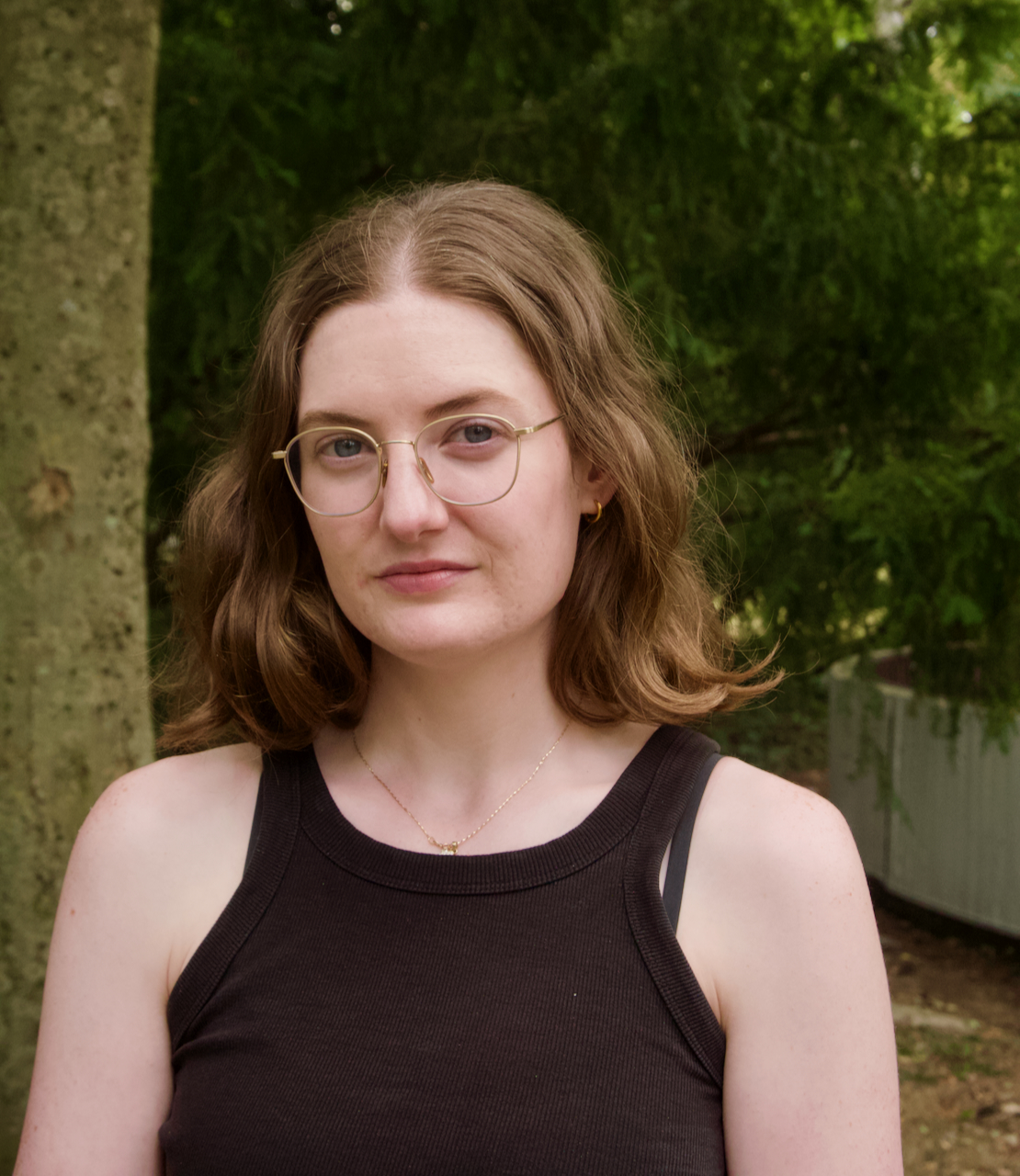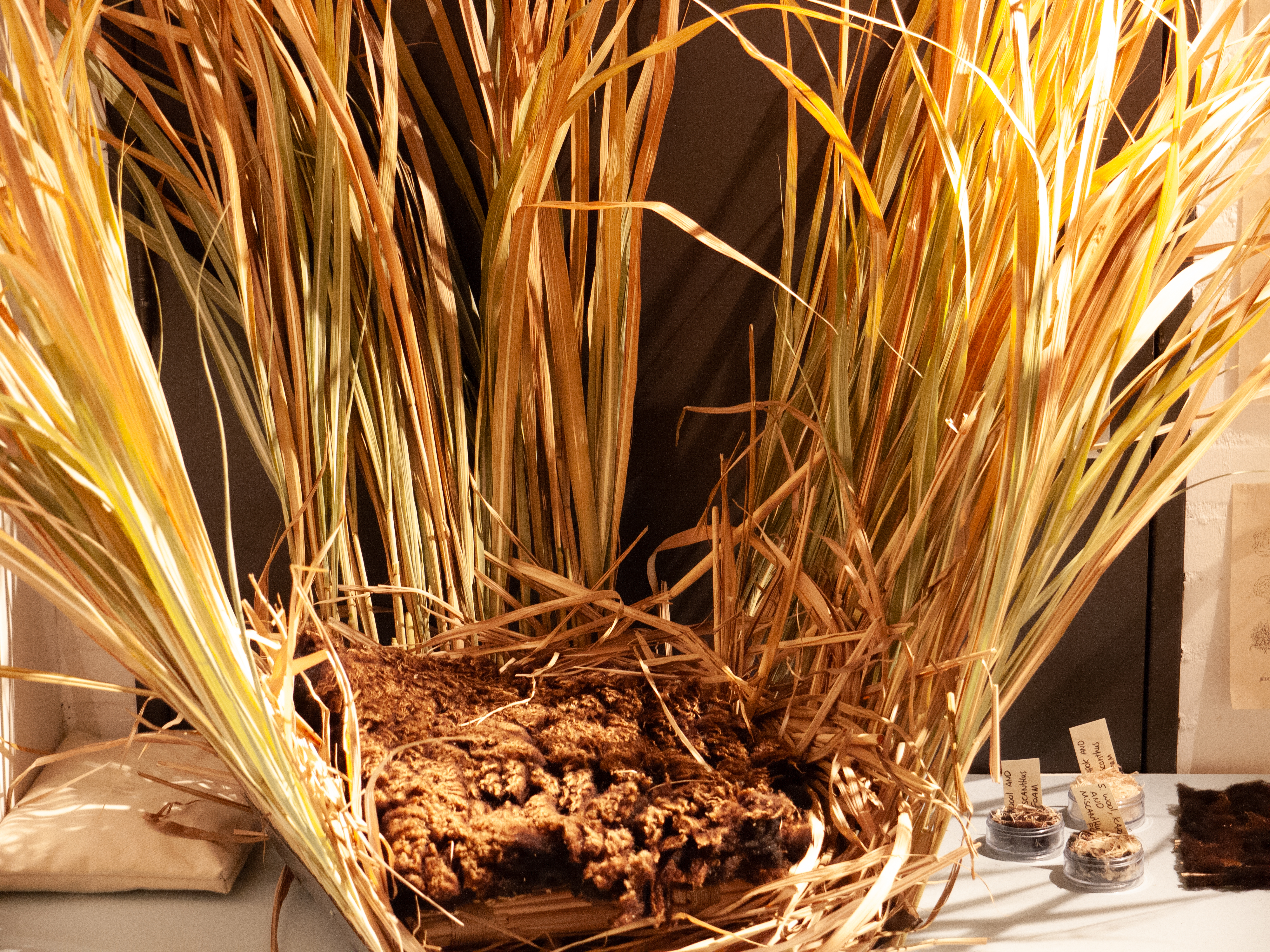While the interview with Leroy & Anouk explored how fashion education at WdKA is being reimagined through new conceptual and pedagogical frameworks, this article spotlights the engine driving that transformation: the technical infrastructure of the Stations. At the heart of this shift is Paulina Martina, digital instructor and a key figure in supporting the development of Digital making in the Fabric station. Her mission is to help students not only understand the digital tools shaping the industry, but to creatively own them.
Paulina’s Path to WdKA
Paulina Martina’s journey into fashion education didn’t begin in a classroom. It started in the workshop. With a background in fashion design and user experience design, she has spent over a decade exploring how digital technologies can reshape the ways we make, wear, and imagine clothing.
“I’ve always been interested in the intersection between making and interaction,” Paulina explains. “That’s what brought me to digital fashion. How do you bring digitalization into the curriculum in a way that links concept and technique?”
Since joining WdKA in 2021, Paulina has worked across from the Fabric station in collaboration with the Interaction, and Image and Sound station. Been instrumentatl in further developing the workflows the support the bridge between different digital tools and software to the Fashion Major years 1-3.
Training Designers of the Future
As a digital instructor, Paulina’s role goes far beyond teaching software. She helps shape the workflow of fashion education, mapping out which technical skills support each stage of a student’s creative process.
“The expectation isn’t that students become experts in every tool,” she notes. “It’s about understanding what’s possible, so students know when to collaborate, when to specialize, and where their voice fits in.”
Students at the Station work with 3D design tools such as CLO3D and Blender. They begin by learning how to construct garments digitally, then move into avatar design, virtual environments, and immersive experiences. New technologies like AI also find their way into the curriculum. “We had a year where students generated textile materials with AI,” Paulina recalls. “It depends on the tool, but we’re always experimenting with new forms of making and publishing, whether that’s AR, VR, or hybrid platforms.”
Tools as Allies, Not Enemies
At the Station, technology is never treated as an endpoint. Instead, it’s presented as a creative enabler. “Digital tools can really unlock a student’s vision if support the explorative process,” Paulina says. “You see students gain confidence, develop more complex ideas, and start experimenting more boldly. That growth, that’s where the magic is.” She describes seeing students move from hesitation to pride, especially after completing full digital workflows. “That sense of progress, of ownership, that’s what I want to support.”
Teaching Across Resistance
One challenge in teaching digital fashion is managing resistance, especially from students who enter with a more traditional vision of what fashion design looks like. “There’s still this idea that fashion is mostly about sketching and draping on mannequins,” Paulina says. “But when you expose students to diverse opportunities within the Fashion industry, they start to see potential and feel agency behind the decisions they make.” To help bridge different learning styles, she often pairs digital demonstrations with physical artifacts. “Some students understand better on screen, others need to hold something. So maybe I 3D print a digital model to explain a concept. That tactile bridge really helps.”
Peer learning also plays a key role. Students with more technical experience are encouraged to share their knowledge, creating a more horizontal classroom dynamic. “It’s not just about me instructing. It’s about building a culture of shared learning.”
Stations Connectivity
The Stations at WdKA act as both resource hubs and production ecosystems, connecting ideas to execution. For Paulina, the value of the Station lies in its real-world applicability. “The techniques we teach can often be applied directly within the practice/industry,” she says. “A campaign might start in Fabric, move through Fashion & Digital, and get finalized in Image & Sound. That flow is unique and powerful.”
Staying Ahead in a Fast-Moving Field
In a landscape where tools evolve rapidly, how do you keep education current? “It’s tricky,” Paulina admits. “You can’t know everything, but you can collaborate. I might follow developments in fashion and share them my colleague Boris Smeenk at the Interaction Station, who specializes in AI. That kind of cross-pollination is essential.”
Through projects like me-you-us, Paulina and her colleagues Peter Schop, Boris Smeenk, Joris Butter have been updating lesson plans to respond to the changing landscape of digital literacy. These updates aren’t limited to Fashion. They are designed to be accessible across majors, making technical foundations relevant to students in animation, illustration, and other disciplines.
The Future is… Hands-On
Looking ahead, Paulina envisions a fashion education that is more tactile, more integrated, and more intentional. “There’s a real need for what I’d call ‘making literacy,’ not just knowing how to use a tool, but understanding the craft behind it. That’s where the Stations at WdKA plays a huge role.”
If she could dive deeper into a technology within the Digital making at the Fabric Station it would be AR: “As the learning treshold is lower, the use is more accessible both to makers and spectators.
That’s empowering.”
Ultimately, what drives Paulina is not just technical excellence, but storytelling, sustainability, and student agency. “So many of our students are finding alternative ways to express themselves. They’re thinking critically about impact, about when and why to make something. That awareness, that ability to choose, that’s what matters.”
At WdKA, digital fashion is no longer a niche or an add-on. It is becoming a foundational language. And with educators like Paulina Martina leading the charge, it is a language students are learning to speak fluently, creatively, and confidently.


